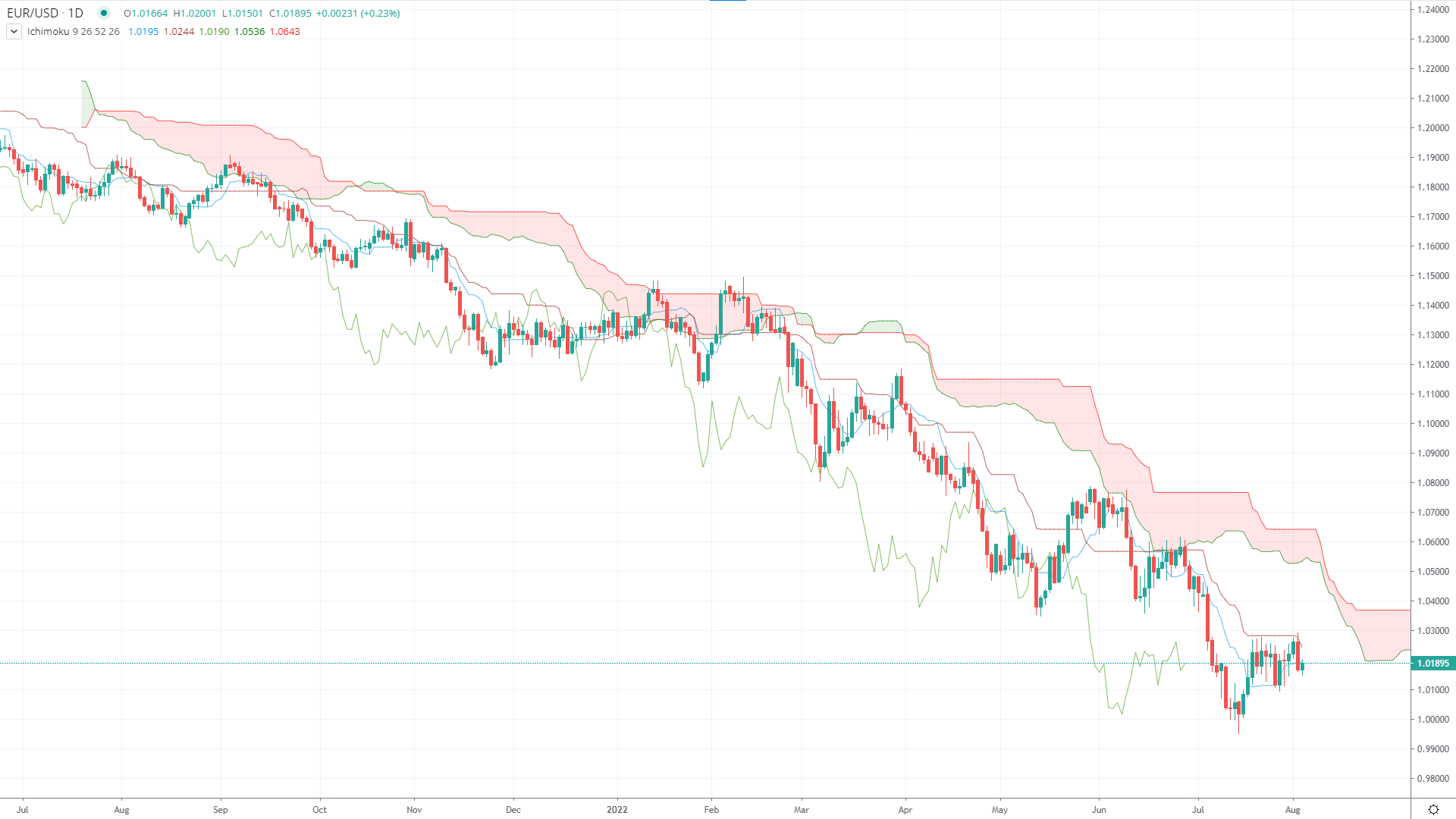Advanced technical analysis
Ichimoku cloud
The next indicator we’re going to look at in this course is the Ichimoku cloud, which is useful for getting a quick idea of trends and directions – as well helping to gauge momentum.
- What is the Ichimoku cloud?
- How to draw the Ichimoku cloud
- Trading with the Ichimoku cloud
- Ichimoku cloud factsheet
What is the Ichimoku cloud?
The Ichimoku cloud is a technical indicator that’s formed of five lines on a market’s chart: the Tenkan, Kijun, Senkou Span A, Senkou Span B and Chikou. The gap between the Senkou Span A and B lines is shaded in, which is how the ‘cloud’ is made.

Source: FOREX.com
The Ichimoku cloud was invented by a Tokyo newspaper in the 1960s. It may appear confusing at first, but once you grasp the basic concepts it is relatively simple to use. In Japan, it is referred to as the ‘one-look equilibrium chart’, because of the amount of information it shows.
How to draw the Ichimoku cloud
To learn how to draw the Ichimoku cloud, you first of all need to know what each of the lines represents. Let’s start with the Tenkan and the Kijun, also known as the conversion line and the base line.
- The Tenkan line is the market’s nine-period high plus its nine-period low, divided by two
- The Kijun is the market’s 26-period high plus its 26-period low, divided by two
As you can see, the Tenkan gives the midpoint of the 9-period high low range, while the Kijun does the same for the 26-period range.
Once we know these two lines, we can draw the upper and lower boundaries of the cloud itself, using the Senkan span A and B:
- The Senkou Span A is the Tenkan plus the Kijun, divided by two. This is the top of the cloud
- The Senkou Span B is the 52-period high plus the 52-period low, divided by two. This is the bottom of the cloud
However, the cloud isn’t drawn on today’s price. Instead, you plot it 26 periods in the future.
Finally, the Chikou is today’s close, plotted 26 periods in the past.
Trading with the Ichimoku cloud
The relationship between these lines can quickly tell you a lot about a market.
When Span A is above Span B, it’s usually a sign that the market is in an uptrend. In this case, the cloud is usually colored green. When B is above A, the cloud will be red and the market may be in a bear trend.
Plus, the cloud offers further clues as the momentum of any current market conditions. In a bullish market, for example, price action will be above the cloud. If the Tenkan then crosses above the Kijun, it can be a further signal of upward momentum – especially if this also occurs above the cloud.
If the Tenkan crosses below the Kijun, meanwhile, then the bull market may be weakening.
In bearish markets, the opposite is true:
- Price action will typically be below the cloud
- The Tenkan crossing below the Kijun (when both are below the cloud) indicates a strong bear trend
- The Tenkan crossing above the Kijun can signal that the bear market is weakening
As we noted above, you can also use the cloud to predict future areas of support and resistance, unlike many other indicators that only give current areas of strength and weakness.
Ichimoku cloud factsheet
| Type: | Indicator |
| Used in: | Any conditions |
| Used for: | Spotting trends and Predicting support and resistance |
| Markets: | Any |
| Timeframes: | Any |

